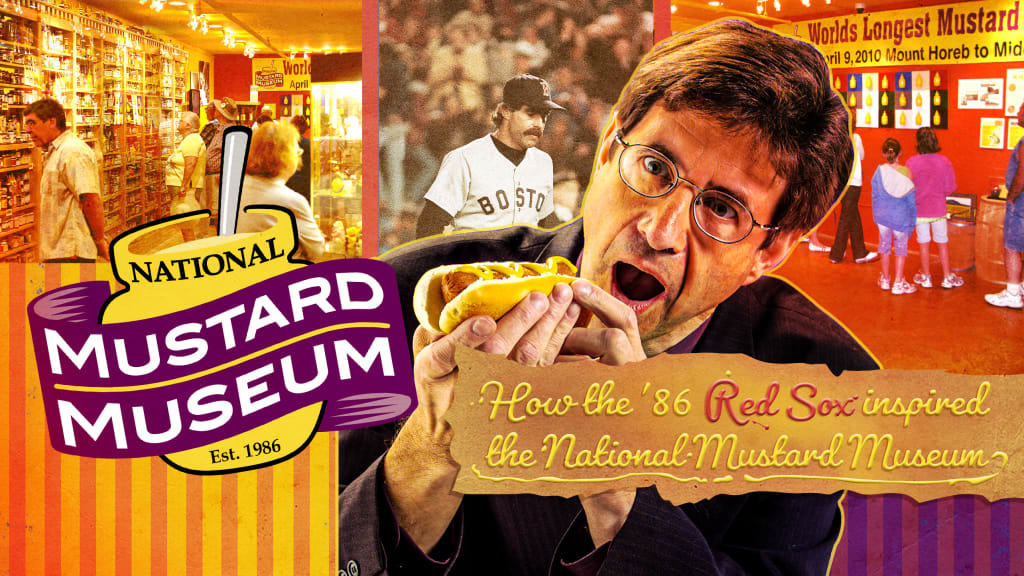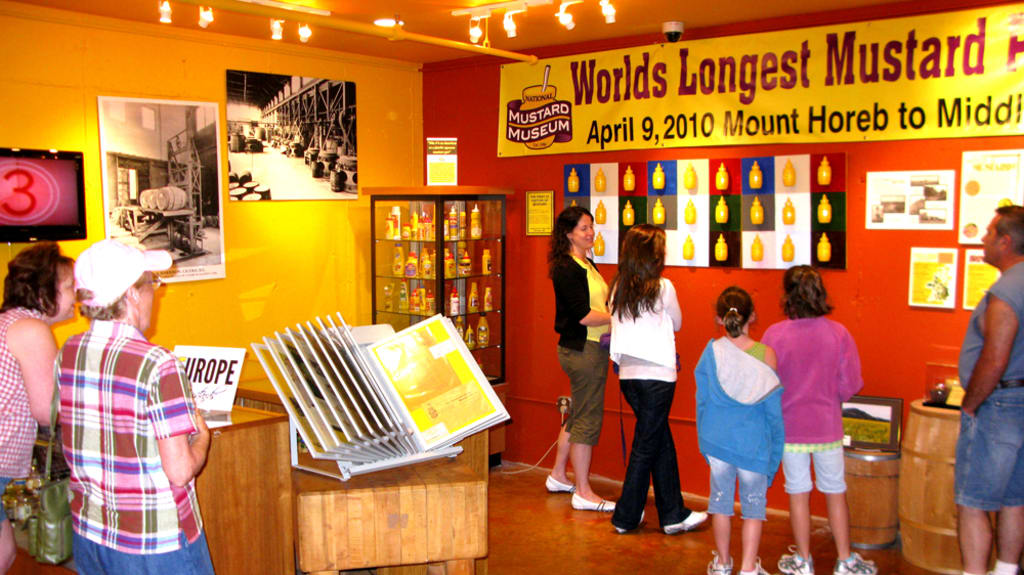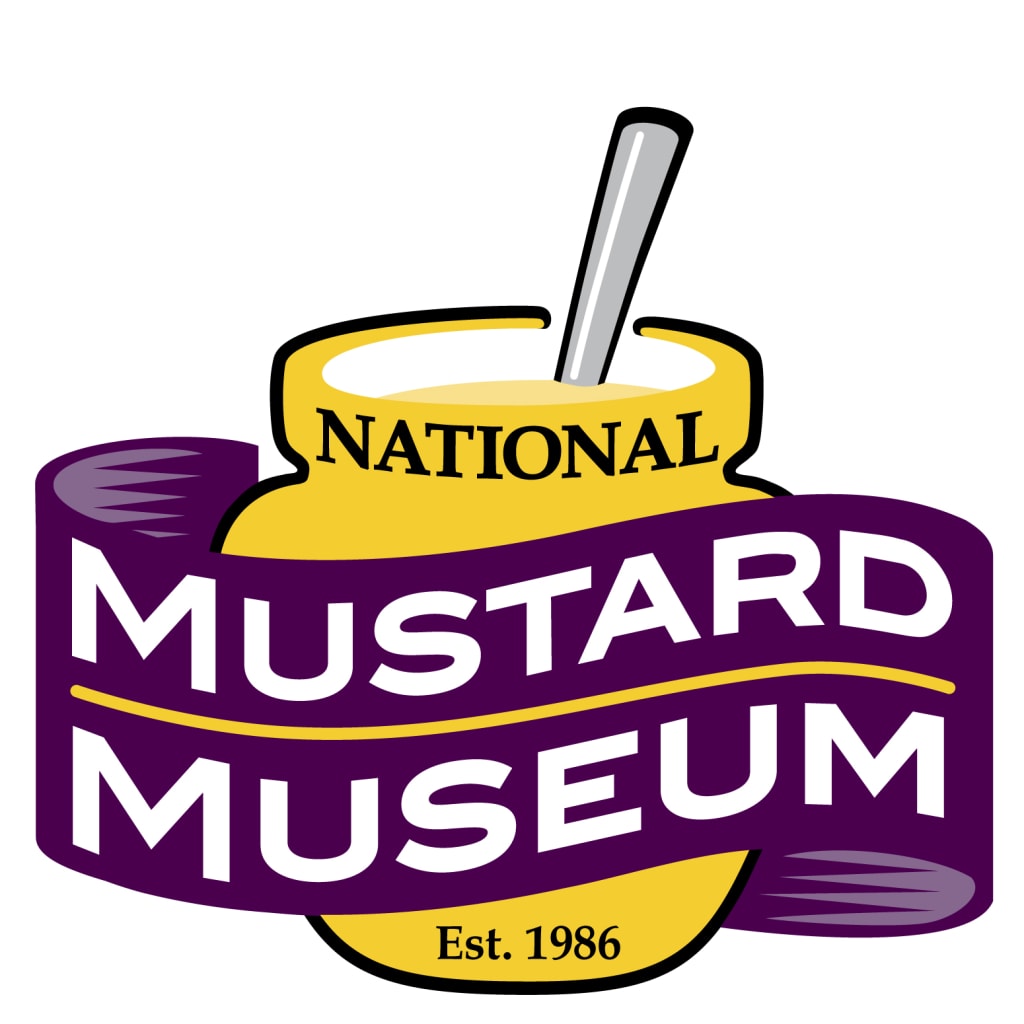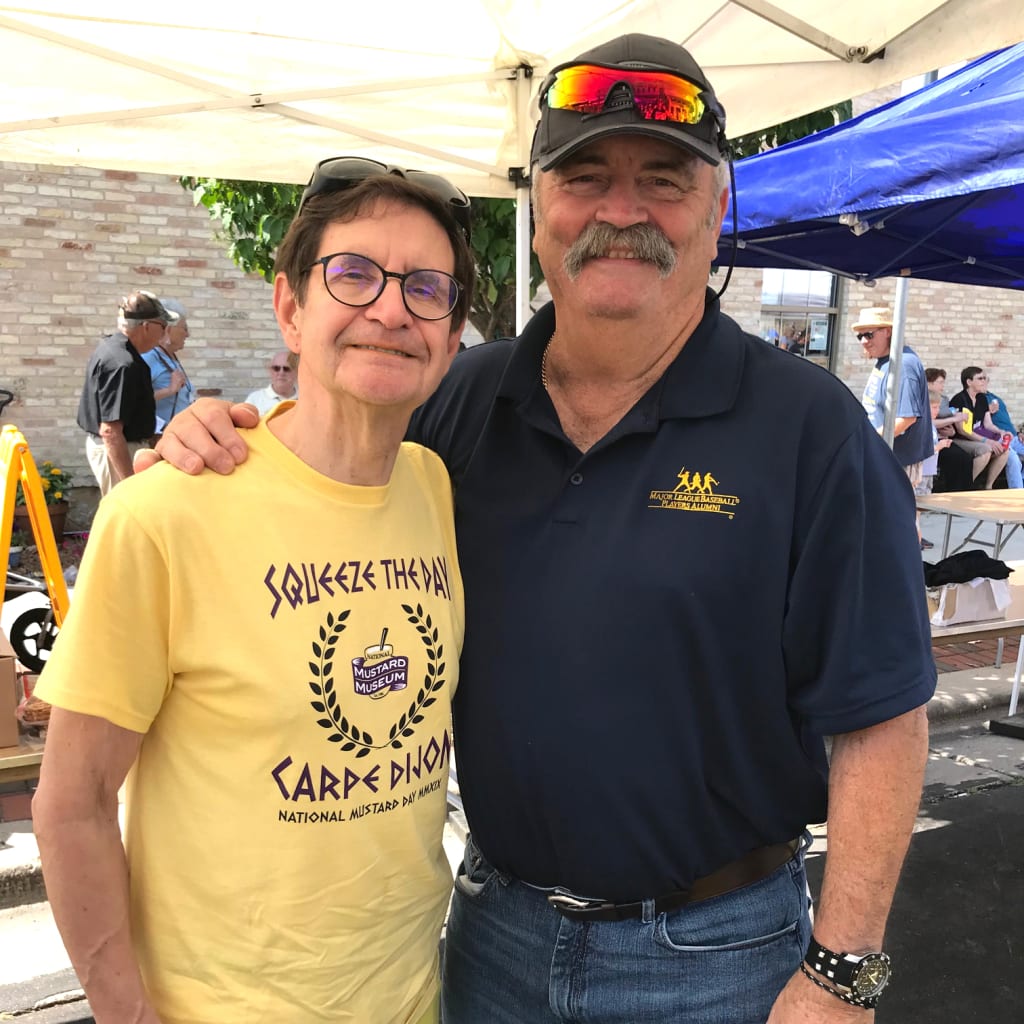
The dream came to him from a nightmare -- at least, the kind of nightmare that every baseball fanatic has at least once in their life. Barry Levenson -- who originally hails from Worcester, Mass., but was the assistant attorney general at the Wisconsin Department of Justice -- had just finished watching the Boston Red Sox lose the 1986 World Series in the worst way conceivable.
"I was just devastated," Levenson said in a recent Zoom call. "I was heartbroken."
Unable to sleep following the Mets' Game 7 comeback, Levenson headed to a nearby 24-hour grocery store for something to occupy his mind and his time. That's where the idea struck him.
"I just roamed up and down the aisles, pushing an empty cart, tears coming down my cheeks," Levenson remembered. "I said, 'This is crazy. A grown man, bent out of shape because of a baseball game? I need a hobby. I need to collect something.'"
Levenson's eyes light up as he tells the tale, as if he's a little kid telling the story about a cherished toy.
He turned down the condiment aisle and looked at all the sauces -- the ketchups, relishes, mayos and hot sauces staring back at him from their place in grocery store abyss. But only one called to him deep in his soul.
"Suddenly, I was in front of the mustards," Levenson said, "and I heard a voice say, 'If you collect us, they will come.' I did, and they have."
There, as Red Sox Nation mourned a World Series, the (mustard) seed was planted: Levenson would one day open the National Mustard Museum.

It didn't happen overnight. At first, Levenson just began collecting mustards, starting with the original stash of 10 that he bought that depressing evening. Soon he watched his pantry swell to some hundred jars, then two hundred.
At this point, it was still a collection, a quirk, but not a serious pursuit. His next cosmic signal to go even further came in another most unlikely place: The U.S. Supreme Court. Levenson was there to argue an important Fourth Amendment case -- Griffin vs. Wisconsin -- but on his way to the courthouse one morning, he spied an unopened jar of mustard placed on a used room service tray in the hallway. Could he let it lie there, perfectly good to eat, just to be thrown away?
"So, I did what I think every good lawyer would have done: I looked to my left, I looked at my right, saw no one was watching and I took it," Levenson joked. "I didn't have time to go back to my room, so I brought it with me to the U.S. Supreme Court. I argued that case with a jar of mustard in my pocket and I won."
He pauses for a moment before going into his delivery like the mustard-themed vaudeville version of a Bruce Hurst windup.
"I think this is poetic justice: Because this is the court that gave us Justice Felix Frankfurter and Chief Justice Warren Burger," Levenson said. "It was only a matter of time before the mustard arrived."

Realizing that he was having too much fun with his side hustle, he decided he'd had enough of the law life and in 1991 made the National Mustard Museum a reality. Located in Middleton, Wis., the museum is now open Thursday through Monday, ready for all your mustard tasting and research needs. There are over 6,300 mustards in the museum from all over the world, including Japan, France and Romania.
"We have an exhibit on the mustard from Turkmenistan," Levenson said. "Now, Turkmenistan -- the former Soviet Republic -- has never made mustard, but we have a mustard from Turkmenistan. How is that possible? Well, the reason is, a couple months ago, we had a visit by a fellow by the name of Alan Mustard. And he was the U.S. Ambassador to Turkmenistan. So, we have his picture and have a mustard from Turkmenistan."
You can even sample some of the collection -- try that at The Natural History Museum and see how it turns out -- with a variety available every day at the tasting bar. Naturally, though, Levenson knows mustard pairs best with hot dogs and a warm day out at the ballpark. While he'll often go with a traditional yellow mustard on a hot dog -- French's, in his opinion, can't be beat -- he may also opt for a dijon if it's available.
"You go to a ballgame, and you gotta have a hot dog. There's the blue skies, the green grass, you hold it up with the yellow squiggle on it. It's just the best," Levenson said.
While the Red Sox's loss in the '86 World Series may have inspired him to start the museum, baseball never left his blood. That's apparent from his Fenway Park Zoom background to the navy blue Red Sox jersey he wore for our interview. Gorman Thomas, the legendary, mustachioed Brewers slugger has even become a friend and a National Mustard Museum award-winning sauce creator for his Stormin' Sauce -- a South Carolina-style mustard-based barbecue sauce.

"It's the best thing in the world for pulled pork sandwiches because it just shows how mustard is very versatile," Levenson said.
He even wrote a book, "The Seventh Game," on the 35 World Series that had gone the distance at its time of publication in early 2004. All the pain he had suffered in '86 was about to be erased, though he didn't know it at the time.
"I dedicated it to my dad, and the end of the dedication, [it said] 'Thanks for playing catch with me. Thanks for letting me stay up to listen to games. Hang in there Dad, this will be the year," Levenson said. "And it was."
So, what should you do if you find yourself like Levenson, despondent after a crushing postseason loss?
"You may lose a seventh game like I did -- like we did," Levenson said. "But things will turn around. That's the thing -- there's always another tomorrow in baseball. The whole, 'Wait till next year'? I did. And next year finally came around."
